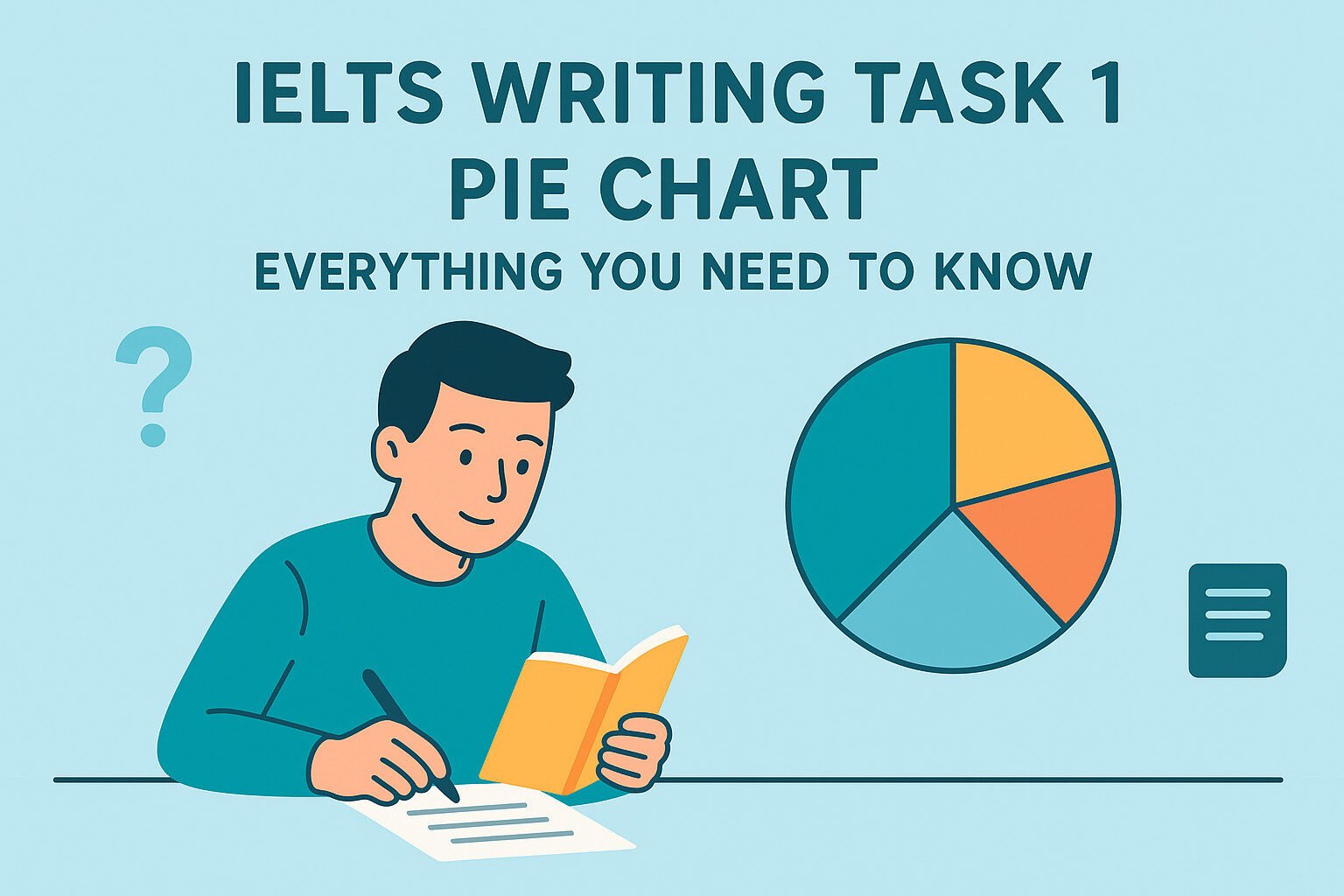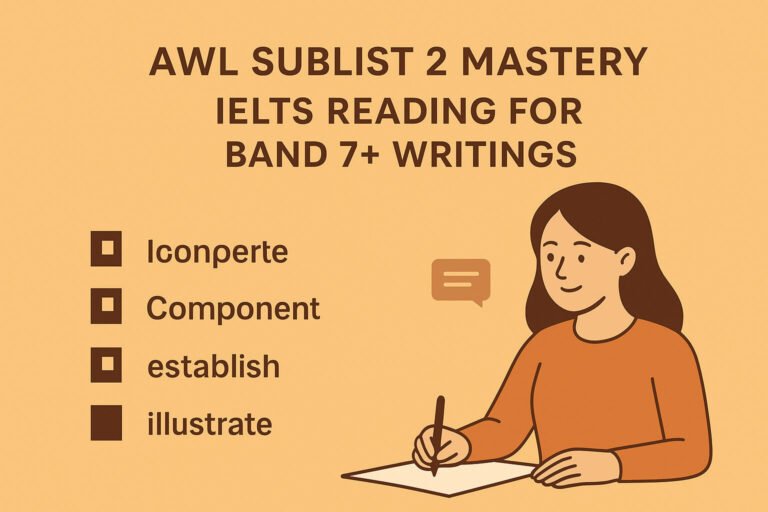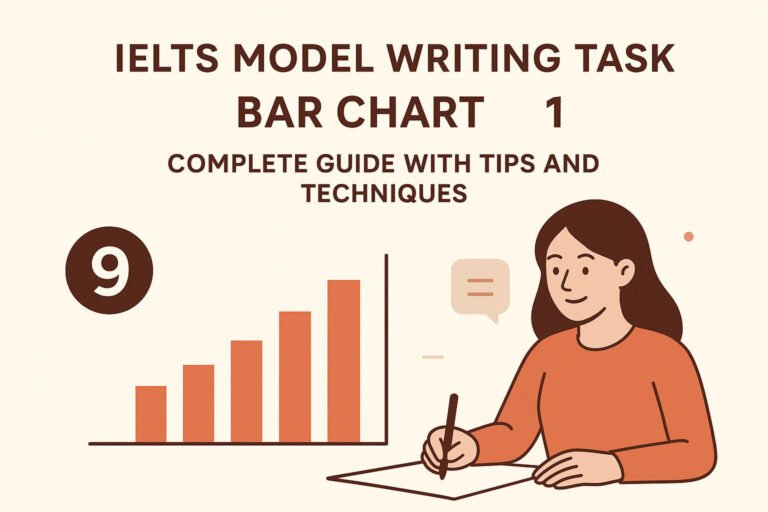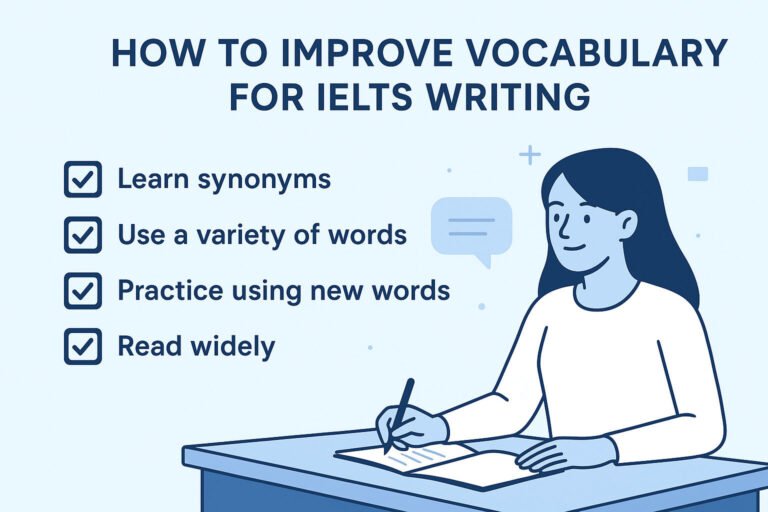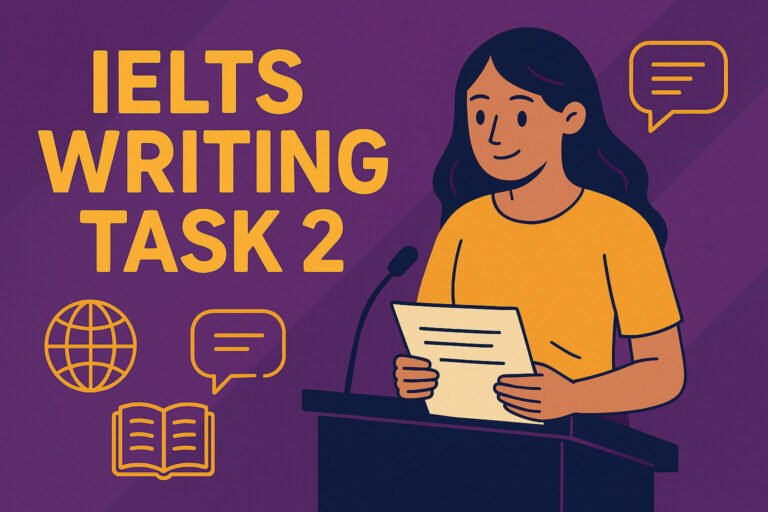Struggling to describe a pie chart in IELTS Writing Task 1? You’re not alone—many IELTS aspirants find pie charts tricky, with their percentages and proportions demanding clear, concise explanations. Mastering the IELTS Writing Task 1 pie chart is crucial for achieving a high band score, especially if you’re aiming for study abroad opportunities. This guide will break down everything you need to know to ace pie charts in minutes, from structure to vocabulary, with practical tips and a model score 9 answer. Let’s unlock the secrets to success and boost your confidence!
Why Pie Charts Matter in IELTS Writing Task 1
Pie charts are a common task in IELTS Academic Writing Task 1, testing your ability to summarize and compare data visually. They require you to analyze proportions, identify trends, and present information clearly within 150–200 words. A strong response can set you apart, showing examiners you can handle data with precision.
In this post, we’ll cover:
Step-by-step strategies to structure your answer
Key vocabulary and phrases for high scores
A Writing Task 1 pie chart sample answer to guide you
Common mistakes to avoid
Ready to transform your pie chart answers into band 7+ material? Let’s dive in!
👉 Join Our Telegram Channel to Download IELTS Academic/General PDF and Audios
🎧 Includes all Listening Audios + Speaking Videos + Answer Explanations + Writing Samples.
Understanding the IELTS Writing Task 1 Pie Chart
What Is a Pie Chart?
A pie chart is a circular graph divided into slices, each representing a percentage or proportion of a whole. In IELTS Writing Task 1, you’ll typically see one or two pie charts, often comparing data across categories (e.g., energy sources) or time periods (e.g., 2010 vs. 2020).
What Does the Examiner Expect?
Examiners assess your response based on four criteria:
Task Achievement: Accurately summarize and compare data.
Coherence and Cohesion: Organize ideas logically with clear paragraphs.
Lexical Resource: Use varied, precise vocabulary.
Grammatical Range and Accuracy: Show a range of sentence structures.
Key Features to Identify
When analyzing a pie chart, look for:
Largest/smallest segments: Highlight dominant or minor categories.
Comparisons: Note differences between categories or time periods.
Trends: Identify shifts if multiple charts are provided.
Units: Pay attention to percentages, proportions, or other metrics.
Always spend 2–3 minutes analyzing the pie chart to identify key features before writing. This ensures a focused, high-scoring response.
How to Structure Your Pie Chart Answer
A clear structure is your roadmap to a band 7+ answer. Follow this proven format for IELTS Writing Task 1: Pie Chart responses:
1. Introduction (1–2 sentences)
Paraphrase the task question to introduce the chart(s). Avoid copying the prompt verbatim.
Example: The pie charts illustrate the distribution of energy sources in two countries in 2020.
2. Overview (2–3 sentences)
Summarize the main trends or patterns without specific data. This shows your ability to identify key points.
Example: Overall, renewable energy dominated in Country A, while Country B relied heavily on fossil fuels.
3. Body Paragraph 1: Key Details
Focus on the most significant data points (e.g., largest segments or notable comparisons).
Use percentages or proportions.
Group similar categories for clarity.
4. Body Paragraph 2: Additional Details
Cover smaller segments, trends, or comparisons not mentioned in the first body paragraph.
Include specific data to support your points.
Avoid repeating information from the overview.
A clear structure (introduction, overview, two body paragraphs) ensures coherence and maximizes your score.
Step-by-Step Guide to Ace Pie Charts in Minutes
Here’s a simple, actionable strategy to tackle IELTS Writing Task 1 pie chart tasks effectively:
Analyze the Chart (2–3 minutes)
Identify the title, categories, and units (e.g., percentages).
Note the largest/smallest segments and any trends.
Compare charts if there are multiple.
Plan Your Answer (1–2 minutes)
Decide on key points for the overview.
Group data logically for body paragraphs.
Write Your Response (12–15 minutes)
Follow the four-paragraph structure.
Use varied vocabulary and sentence structures.
Aim for 150–200 words.
Check Your Work (2–3 minutes)
Review for grammar, spelling, and clarity.
Ensure you’ve included all key data without repetition.
Time management is key—allocate time for analysis, planning, writing, and checking to produce a polished answer.
Key Vocabulary for Pie Chart Descriptions
Using precise, varied vocabulary is essential for a high Lexical Resource score. Here’s a list of words and phrases tailored for IELTS Writing pie chart tasks:
Describing Proportions: accounted for, comprised, made up, constituted, represented
Comparing Data: in contrast, whereas, compared to, significantly higher, marginally lower
Trends/Changes: increased, declined, remained stable, fluctuated
Percentages: a quarter, half, one-third, a significant portion, a small fraction
Example Sentences
Renewable energy accounted for 40% of total consumption in 2020.
In contrast, fossil fuels constituted a mere 10% in Country A.
The proportion of solar energy doubled from 2010 to 2020.
Use a mix of synonyms and precise terms to describe data clearly and avoid repetition.
IELTS Writing Task 1: Pie Chart Model Score 9 Answer
Let’s look at a model score 9 answer for a typical IELTS Writing Task 1 pie chart task.
Task: The pie charts below show the percentage of energy sources in two countries in 2020. Summarize the information by selecting and reporting the main features and make comparisons where relevant.
Energy Source | Country A (2020) | Country B (2020) |
|---|---|---|
Solar | 40% | 10% |
Wind | 30% | 20% |
Fossil Fuels | 20% | 60% |
Hydro | 10% | 10% |
Sample Answer
The pie charts illustrate the distribution of energy sources in Country A and Country B in 2020. Overall, Country A relied heavily on renewable energy, with solar and wind dominating, while Country B depended primarily on fossil fuels.
In Country A, solar energy was the largest source, accounting for 40% of the total, followed closely by wind at 30%. Fossil fuels made up a smaller portion at 20%, and hydroelectric power contributed the least, at 10%. This indicates a strong preference for renewable energy in Country A.
In contrast, Country B’s energy mix was dominated by fossil fuels, which constituted 60% of the total. Wind and solar energy accounted for 20% and 10%, respectively, while hydroelectric power matched Country A’s contribution at 10%. Notably, Country B’s reliance on fossil fuels was three times higher than Country A’s.
In summary, while Country A prioritized sustainable energy sources, Country B’s heavy dependence on fossil fuels highlights a significant difference in energy policies. (161 words)
A high-scoring answer includes a clear overview, precise data, and logical comparisons without unnecessary repetition.
Common Mistakes to Avoid
Avoid these pitfalls to ensure a high band score in IELTS Writing Task 1: Pie Chart:
Overloading with Data: Don’t list every percentage—focus on key trends.
No Overview: Skipping the overview lowers your Task Achievement score.
Repetition: Avoid reusing the same words (e.g., “percentage” repeatedly).
Ignoring Comparisons: Always compare data when relevant, especially with multiple charts.
Poor Time Management: Spend too long on one section, and you’ll rush the rest.
Focus on clarity, variety, and time management to avoid common errors.
Practice Resources for Pie Charts
To master IELTS Writing pie chart tasks, practice is key. Here are some resources:
Official Cambridge IELTS Books: Find authentic IELTS Academic Writing Task 1 practice tests on the Cambridge IELTS website.
IELTS Nest Practice Tests: Explore our free IELTS Writing Task 1 practice materials for more Task 1 sample pie chart exercises.
Online Simulators: Use platforms like IELTS Liz or IELTS Buddy for pie chart IELTS Writing Task 1 practice with answers.
Regular practice with reliable resources builds confidence and improves your skills.
FAQ: People Also Ask
How do you write a pie chart for IELTS Writing Task 1?
Start with a paraphrased introduction, followed by an overview of key trends. Write two body paragraphs detailing major and minor data points, using comparisons and precise vocabulary. Keep it concise (150–200 words).
How can I improve my IELTS Writing Task 1 pie chart score?
Focus on a clear structure, varied vocabulary, and accurate data comparisons. Practice with IELTS Writing Task 1 pie chart sample answers and review examiner feedback.
What are common mistakes in IELTS pie chart tasks?
Common errors include skipping the overview, listing all data without summarizing, and overusing repetitive words. Always compare data and check for grammar errors.
How do I describe percentages in a pie chart?
Use phrases like accounted for, comprised, or represented followed by percentages (e.g., Solar energy accounted for 40% of the total). Vary your language to avoid repetition.
Where can I find IELTS Writing Task 1 pie chart PDFs?
Visit ieltsnest.com for downloadable IELTS Writing Task 1 pie chart PDFs or check official Cambridge resources for authentic practice materials.
How long should I spend on IELTS Writing Task 1?
Spend 20 minutes total: 2–3 minutes analyzing, 1–2 minutes planning, 12–15 minutes writing, and 2–3 minutes checking.
These FAQs address common concerns and optimize your content for Google’s People Also Ask feature.
Conclusion: Ace Your Pie Chart Task Today!
Mastering the IELTS Writing Task 1 pie chart is a game-changer for your study abroad dreams. By following a clear structure, using varied vocabulary, and practicing regularly, you can turn a tricky task into a high-scoring opportunity. Start applying these strategies today, and you’ll be one step closer to your target band score!
Ready to practice? Download our free IELTS Writing Task 1 Pie Chart: 12 Sample Answers at ieltsnest.com and start acing pie charts in minutes!

